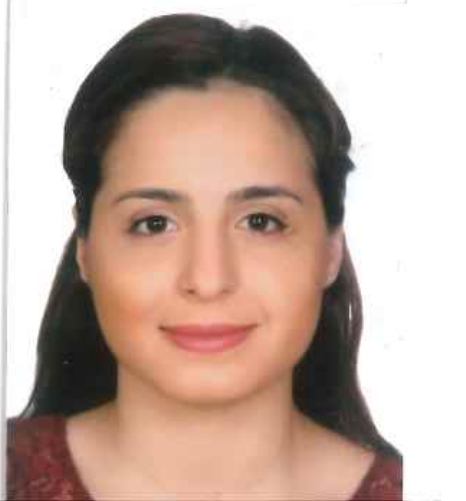
The Arabic Language Proficiency Test (ALPT) is designed by the Arabic Academy and serves as a standardized assessment of comprehensive Arabic language skills, primarily for non-native learners. The test consists of five modules: Listening, Reading, Structure, Writing, and Speaking, covering daily communication, academic contexts, and cultural understanding. Below is a detailed overview of its structure, CEFR alignment, and key information:
I. Exam Structure and Modules
ALPT’s five modules evaluate distinct language skills, as outlined below:
1. Listening Comprehension
- Includes short dialogues, long monologues, and academic lectures, testing the ability to grasp details and main ideas in everyday and formal contexts.
- Question types: Multiple-choice, fill-in-the-blanks, and summary tasks.
2. Reading Comprehension
- Covers texts such as news articles, literary excerpts, and official announcements, assessing understanding of explicit information, inference, and authorial intent.
- Question types: Multiple-choice, paragraph matching, and short-answer questions.
3. Grammar Structure
- Divided into "Sentence Completion" and "Error Identification," focusing on verb conjugations, syntactic structures, and vocabulary collocations in Modern Standard Arabic (MSA).
4. Writing
- Requires candidates to compose essays, letters, or reports on given topics, evaluating logical coherence, lexical richness, and grammatical accuracy.
- Scoring criteria reference the American Council on the Teaching of Foreign Languages (ACTFL) guidelines for writing assessment.
5. Speaking
- Involves a live online conversation with a native speaker, assessing fluency, pronunciation, and cultural appropriateness.
- Tasks include self-introduction, picture description, opinion expression, and interactive Q&A.
II. Level Descriptions and CEFR Alignment
While ALPT does not explicitly label levels, its competency requirements broadly align with the Common European Framework of Reference (CEFR) levels A1 to C2:
1. Beginner (A1–A2)
- Understands basic vocabulary (~800–1,500 words) and engages in simple daily interactions (e.g., shopping, self-introduction). Comprehends short texts and announcements.
- Exam Focus:
- Listening: Short dialogues in everyday settings.
- Reading: Simple notices and informal texts.
- Writing: Filling forms or writing short sentences.
- Speaking: Answering basic questions and exchanging personal information.
2. Intermediate (B1–B2)
- Expands vocabulary to 2,500–4,000 words, communicates coherently in professional/academic contexts, and understands intermediate texts (e.g., news, narratives).
- Exam Focus:
- Listening: Interviews, radio programs, and lectures on cultural/academic topics.
- Reading: Articles on culture, society, or history, requiring analysis of main ideas.
- Writing: Composing 100–200-word argumentative essays or formal letters.
- Speaking: Role-playing scenarios (e.g., business negotiations) and delivering short speeches.
3. Advanced (C1–C2)
- Mastery of complex language in specialized contexts (e.g., academic papers, literature), capable of deep academic discussions or impromptu debates. Vocabulary exceeds 6,000 words.
- Exam Focus:
- Listening: High-speed interviews, academic seminars, and debates with nuanced content.
- Reading: Philosophical texts, legal documents, or classical literature requiring critical analysis.
- Writing: 250–300-word academic papers or literary critiques with rigorous structure.
- Speaking: Debating social/ethical issues, interpreting cultural phenomena, and delivering impromptu lectures.
III. Exam Features and Recognition
1. Authority
- Developed by the Arabic Academy and endorsed by the Islamic Chamber of Commerce, Industry and Agriculture (ICCI), recognized in 56 countries, including all Arab nations.
2. Flexibility
- Offered in both written and oral formats; candidates can choose modular testing (e.g., speaking-only or writing-only). Scores are valid for life.
3. Application Scenarios
- Education: Accepted by universities in Arab countries (e.g., Cairo University, Egypt) as a language admission requirement.
- Immigration & Work: Used for long-term residency visas in Arab states or EU Blue Cards (typically requiring B1–B2 levels).
- Career: Valued in industries like foreign trade, translation, and diplomacy for demonstrating professional Arabic proficiency.
IV. Preparation Tips
1. Core Resources
- Textbooks: Arabic for Beginners series for foundational skills; New Arabic Grammar for advanced syntax.
- Practice Tests: Past papers available via the Arabic Academy’s official website or authorized test centers, with a focus on listening and writing drills.
2. Stage-Based Preparation
- Beginner (A1–A2): Listen to Arabic children’s songs and radio broadcasts (e.g., Sawt Al Arab), memorize basic vocabulary lists, and practice simple sentence patterns.
- Intermediate (B1–B2): Read Al Jazeera news articles, join academic discussion groups, and practice essay structures for argumentative writing.
- Advanced (C1–C2): Study classical literature (e.g., One Thousand and One Nights), simulate academic seminar scenarios, and build specialized vocabulary in fields like law or economics.
3. Registration
- Dates: Annual test cycles (e.g., March, June, September); register 1–2 months in advance through authorized centers.
- Fees: ~CNY 800–1,500 per full exam (highest for C2), with ~CNY 600 per module for retakes.

Cool Mango focuses on the online language teaching and learning with all foreign teachers for multiple languages. It aims to popularize online language teaching and learning globally, recruit and train professional teachers worldwide, and create the unique Cool Mango teaching method. It builds an efficient language learning mode and environment with real teaching by native foreign teachers and real-time translation assistance of AI, providing high-quality online language courses and online communication platform for everyone.
 |
  |
  |
Copyright © Cool Mango Co. Ltd. All Rights Reserved. / Privacy Statement / User-agreement











